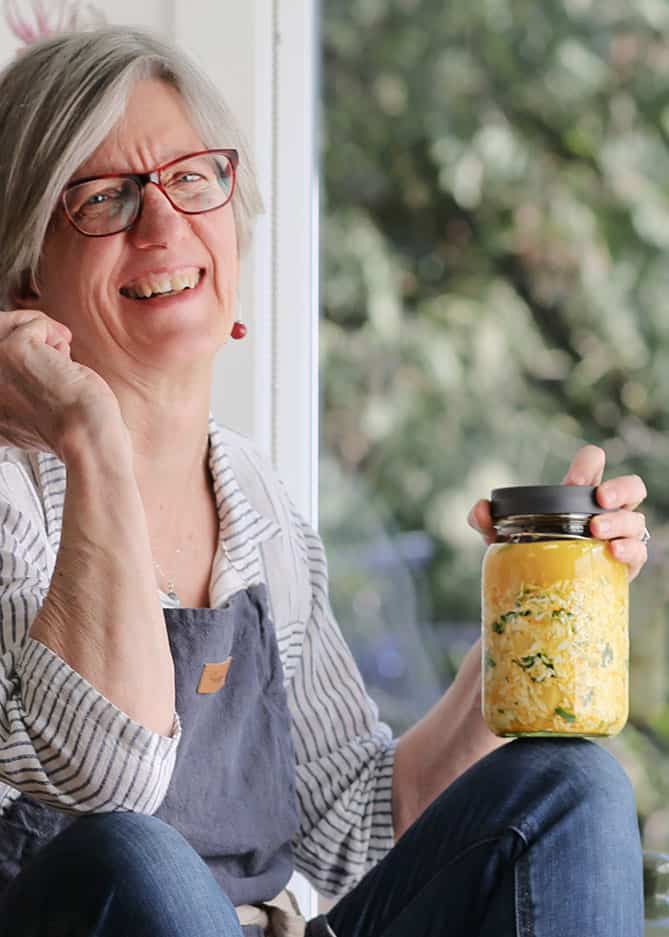Struggling with stubborn odors in your plastic and silicone kitchenware? Our guide offers practical, easy-to-follow steps to remove these persistent smells and delves into understanding why these materials are prone to holding odors. These fixes are super simple. No special cleaning products are required.
A reader commented: “Fantastic. I was trying to get the moldy smell from the rubber seal of my thermos flask. I tried bicarbonate of soda, then vinegar. Neither worked, so I tried the suggestion of soaking in dishwashing liquid. It worked. Brilliant.”
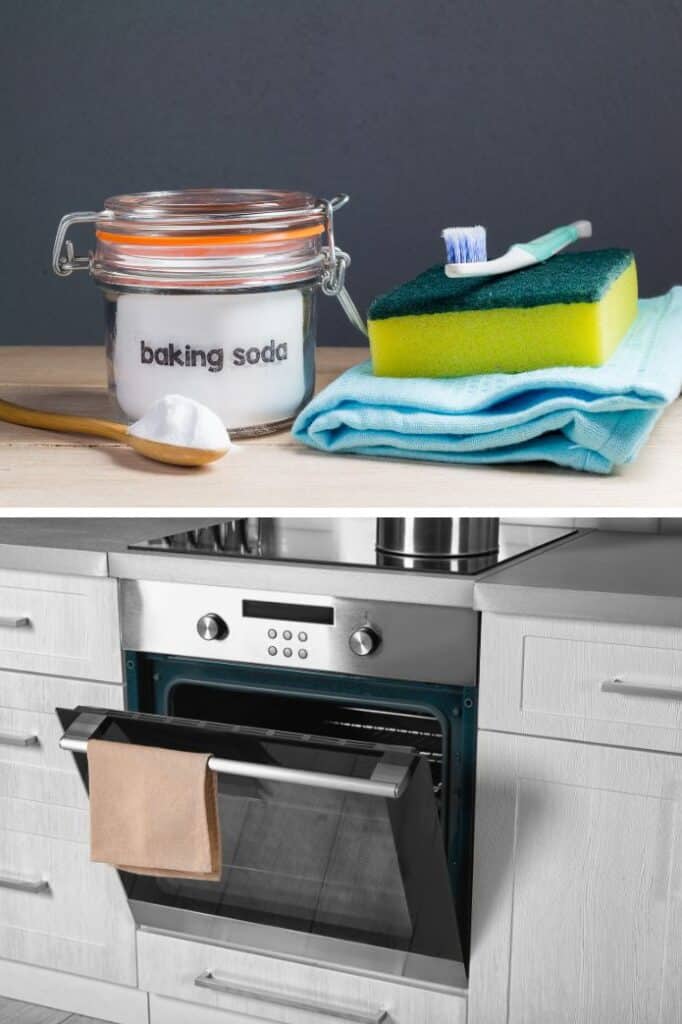
Have you tried to remove lingering smells, such as onion, garlic, and tomato, from plastics or silicone to no avail? What about sour milk or fish? Do you have a pressure cooker and find the silicone sealing ring smells like the last meal? Or a smelly silicone ice tray?
Many suggestions exist for removing smells, such as sealing crumpled newspaper or charcoal in the container, rubbing the items with lemon juice or vinegar, or leaving them in the sun for a day or two.
I tested them all, and I just became frustrated because none of the tips seemed to consistently get rid of the smells.
It wasn’t until I did some deep research and gained some understanding of the basic chemistry of plastics and silicone that it all clicked.
Plastic and silicone are made from different materials and require separate methods for removing odors.
I learned that heat is needed to bake smells out of silicone and that a “base” (baking soda) can neutralize smells in plastic.
And, whatever the method, I wanted to feel comfortable using it. My criteria included:
- No nasty chemicals. I keep a pretty “green” home, so I’m not about to buy some harsh chemicals to clean food containers or my fermentation weights or lids.
- No harsh abrasives. Abrasives can damage silicone and plastic, releasing their manufacturing chemicals or removing non-stick properties.
- No high heat. With silicone, using high heat leaches out chemicals. With plastic, high heat sets odors.
And, now, how do you get rid of those smells?
And if you have no interest in fermentation, no worries; the tips I share work for any silicone or plastic item.
Use Heat to Remove Smells from Silicone

Whether you are trying to remove odors from your Instant Pot sealing ring or a fermentation lid or weight, it helps to understand the properties of silicone.
Properties of Silicone
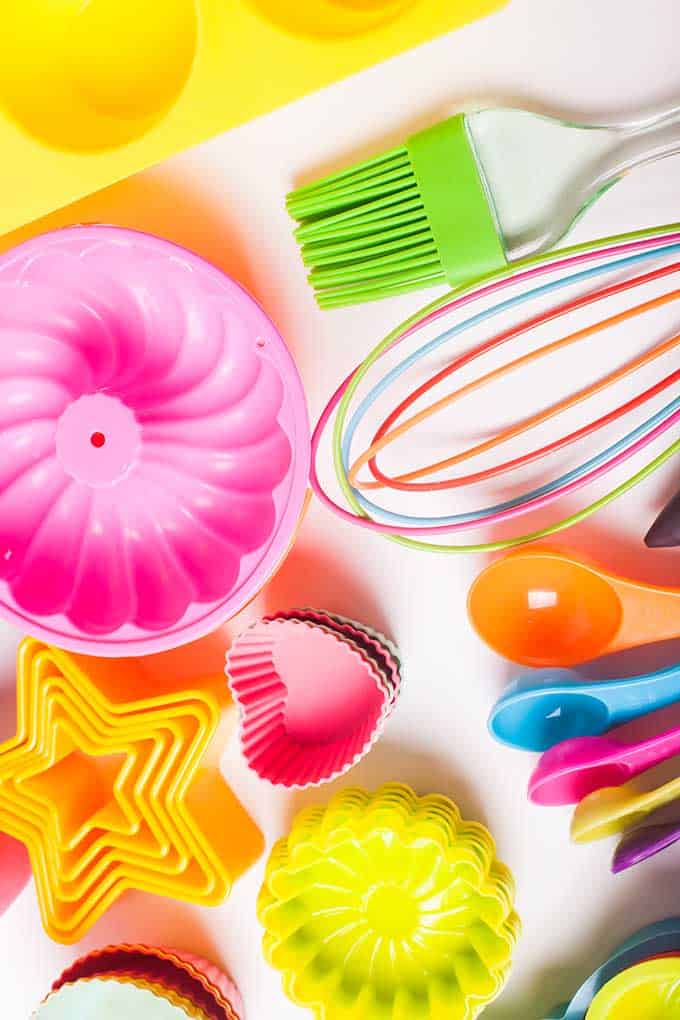
Silicone retains odors due to the properties of the molecules used to make silicone.
Silicone is a synthetic polymer of silicon, oxygen, and other elements, typically carbon and hydrogen. It has a rubber-like consistency that is nonstick and resists heat.
When heated, the molecules in the silicone expand, absorbing oils and odors. When the silicone then cools down, the odors get trapped.
ESSENTIAL TIP #1: Use heat to get rid of smells in silicone.
No cleaning supplies are needed. Just some time in your oven.
The application of heat is key for releasing odors from silicone. In this Food52 thread, one contributor shared the following:
“Silicone molecules expand when warm and secrete soaked-in oils and odors.”
Another reader in the thread shared his experience with using heat to remove odors from silicone:
Today I made toasted sriracha sunflower seeds and my Silpat mat was totally sriracha-fied. As mentioned in this thread, I heated my Silpat in the oven, then soaked it in hot water and white vinegar—BINGO!!!! The smell is totally gone. Thank you so much for posting this solution—it was a huge help.
Heating Silicone
Since the only way to remove odors from silicone is to heat it, I wanted to know if there were any dangers from heating silicone.
Silicone is supposedly inert or chemically stable, meaning that the chemicals used to make the silicone do not leach out, especially when heated.
However, that testing was done on medical-grade silicone without fillers or additives and “at body or room temperature.” These studies have shown that silicone is safe at room temperatures, and long-term follow-up data support this.
However, I recalled from the research for my blog post, Can I Use Plastic? Silicone? Stainless Steel? for Fermentation, that heating silicone to “high” temperatures, as in bakeware, causes leaching of chemicals.
How high is “high?”
Silicone can be stable up to 300°F (150°C), even for a very long time.
I played around with temperatures and methods and came up with the following solution.
What is the best way to get the stink out of Silicon?
First, make sure your silicone item is 100% silicone. Check with the manufacturer, or use the “Twist” Test.
The “twist” test is an easy way to assess the quality of a silicone cookware item. All you have to do is take a silicone product in your hands and twist it. If lots of white streaks appear, it indicates the presence of a large amount of fillers. Pure silicone (safer) will hold its color when twisted. – Belgoods Bakeware
Note: If you see a white powdery sheen developing on your silicone items, it may not be made from 100% food-grade silicone. When purchasing silicone items, look for “100% FDA-approved food-grade silicone” in the product description.
How to Get Smell out of Silicone
- Preheat the oven to 250°F (120°C).
- As the oven is heating, use a gentle dish soap—and a soft sponge or cloth—to wash your silicone item to remove any oils or food residue. Don’t use the rough side of the sponge or a plastic scrubby. Doing so just moves the oils around.
- Place your silicone item on a cookie sheet and put it in the oven to bake out the odors.
- Set a timer for 20 minutes.
- When the timer goes off, give your silicone item the “whiff” test. Pull your silicone item out of the oven and smell it, being careful not to burn your nose.
If there is any lingering smell, return it to the oven for 10 minutes. Repeat until no odors remain. It should take no longer than one hour. - Let it cool, and give it a final wash.
I used this method to remove the smell of spaghetti sauce from the silicone gasket for my Instant Pot and the smell of fermented garlic from my Pickle Pusher.
Use a Base to Neutralize Plastic Smells
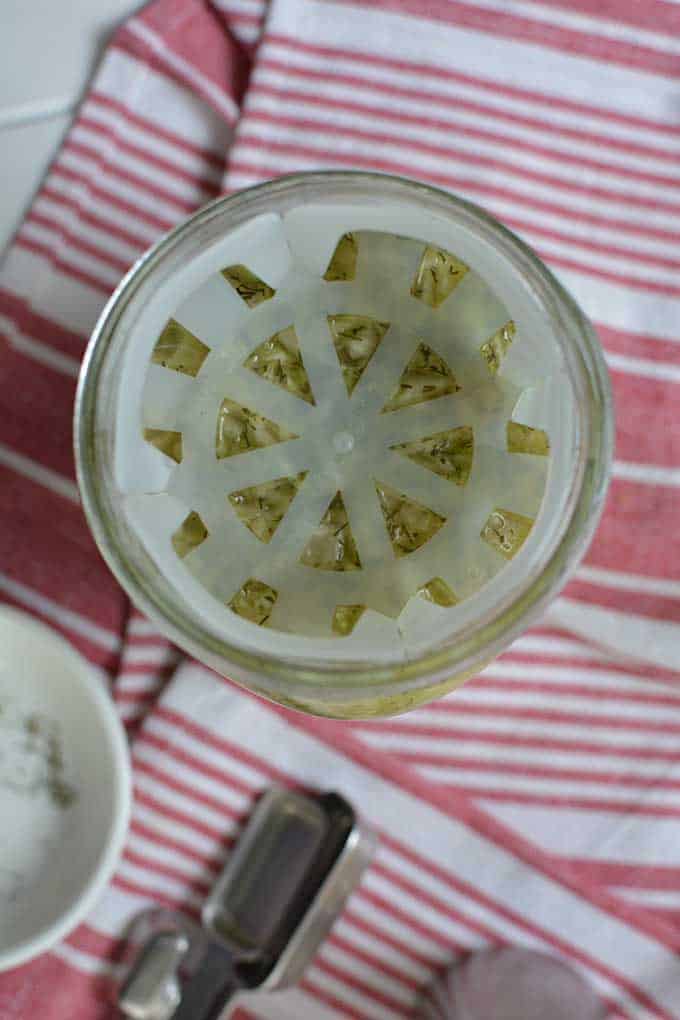
Whether you are trying to remove odors from plastic storage containers or a fermentation lid, it helps to understand the properties of plastic.
Properties of Plastic
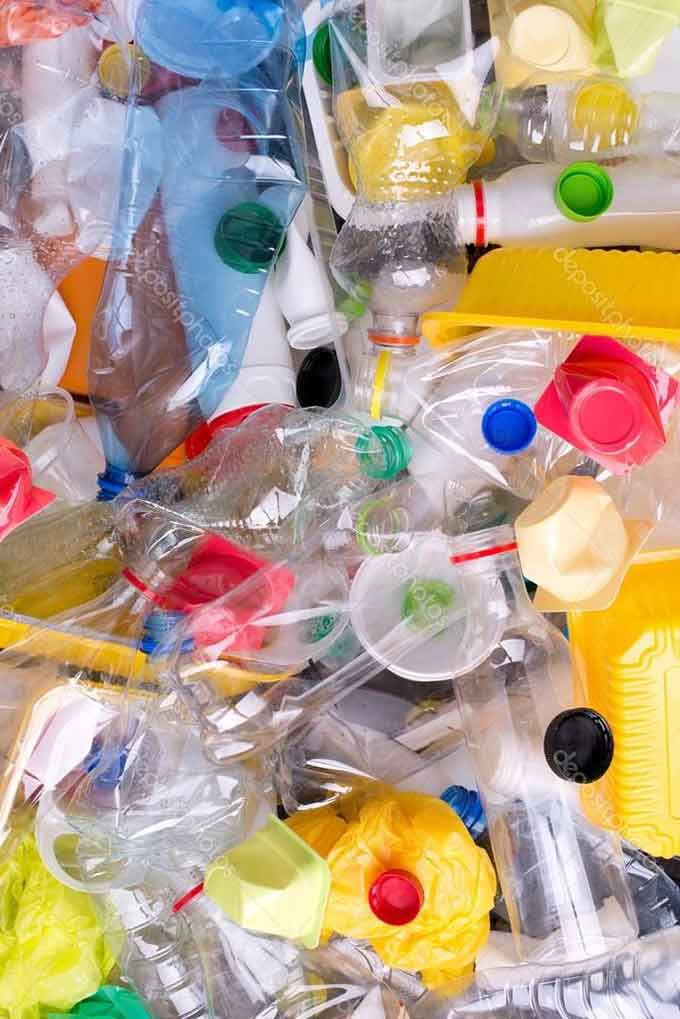
Plastic is made from hydrocarbons derived from petroleum or natural gas. The hydrocarbons are formed into chains called polymers or plastic resins. Different grades of plastics can be created by combining hydrocarbon molecules in different ways.
Normally, with just a bit of soap and water, you can wipe down the plastic and remove odors. But, if smelly residues have permeated too long, plastic can develop a long-lasting pervasive odor. In addition, heat can set odors.
Chemistry Lesson: Acids, Bases, and Solvents
Disclaimer. Chemistry is *not* my strong suit. Professor Google helped me on this one, along with Tim from Melbourne, Australia, who shared his wisdom in this thread.
What happens when you mix vinegar and baking soda? Yes, it bubbles. That bubbling is a chemical reaction. An acid and a base reacting and forming what chemist call ‘salts.’ Salts that grab odors impregnated in the plastic.
Essential Tip #2: Use a base to neutralize smells in plastic.
If your smell is from a slightly acidic food, which is generally the case, a base will help remove the odor. Fermented foods are acidic, so you would use a base to neutralize them.
White vinegar, tomato juice, and lemon juice are acids and will not create the chemical reaction we are looking for.
BONUS TIP: To lift off oils or residue, use a soft sponge or cloth when washing your plastic items. Don’t use the rough side of the sponge or a plastic scrubby. Doing so just moves the oils around.
Directions for Odor Removal from Plastics
- Neutralize the smell with a base. Either sprinkle the item with a nice layer of baking soda—a base—or fill the smelly container with water and add a tablespoon to neutralize the odor. Gently massage baking soda into the plastic with wet hands.
Bleach and dishwashing machine detergent are also bases but not materials I want to use on my plastics. - Leave sit for a few hours. I don’t know if time helps from a chemistry standpoint, but I felt it did.
- Wash “salts” away with a solvent. Rinse off baking soda, then use dish soap—a solvent—and a soft sponge or cloth to remove the “salts” that formed from the reaction you created.
The dish soap breaks apart food molecules stuck to a dish, and the water removes the stuff.
Distilled water and alcohol are also solvents. - If odors still linger, repeat steps 1-3, or try Step 5 and/or Step 6.
- Let sit in an odor-absorbing material for up to 3 days. If there are lingering odors, place the item in an odor-absorbing material to trap remaining odors. A natural (clay) based or non-toxic cat litter, activated charcoal, coffee grounds, and crumpled newspaper are all possibilities. One of my readers had great success with a bucket of garden dirt. Maybe the bacteria “eat” the odors. 🙂
- “Apply” UV Light and let Ventilate. Placing your plastic item outside within direct sunlight will do much to remove odor. The ultraviolet rays, fresh air, and open space will all work to neutralize the odor and lift it away. Place the item outside on a sunny day until the odor is gone.
Other Ways to Neutralize an Acid Smell on Plastic with a Base
- Bleach. Soak the item in a mix of 1 part bleach and five parts water. Let soak for about an hour. Wash well with soapy water.
- Dishwashing Machine Detergent. If the item is dishwasher safe, wash in the dishwasher. You could also soak the item in the detergent.
Frequently Asked Questions
White vinegar, tomato juice, and lemon juice are acids and are not the most effective options to remove smells from plastic. In addition, acidic products, used on a regular basis, can eat away at plastic over time.
Silicone can hold smells, particularly from strong odors. This is because silicone is a porous material, allowing odors to penetrate its surface.
Other Solutions?
Is all this work to remove odors in plastic or silicone fermentation weights and lids more trouble than it’s worth? This is a good question that I will leave for you to answer.
In my blog post, Can I Use Plastic? Silicone? Stainless Steel? for Fermentation I cover all the pros and cons of each material.
Perhaps an easier solution is to use only glass and stainless steel for fermentation. And use glass storage containers when possible.
Glass Fermentation Items
Here are some currently available glass fermentation weights. I show the ones with handles since they are so much easier to remove from your jar. 🙂
Stainless Steel Fermentation Items
Here are some currently available stainless steel fermentation kits. You can’t get a seal on your jar without the use of some rubber or silicone. Silicone is used where noted.
Please Share in the Comments Section!
What have you tried? What works for you? What does not work?
Together, we can banish these pervasive odors from our homes.

Last update on 2024-07-26 / Affiliate links / Images from Amazon Product Advertising API

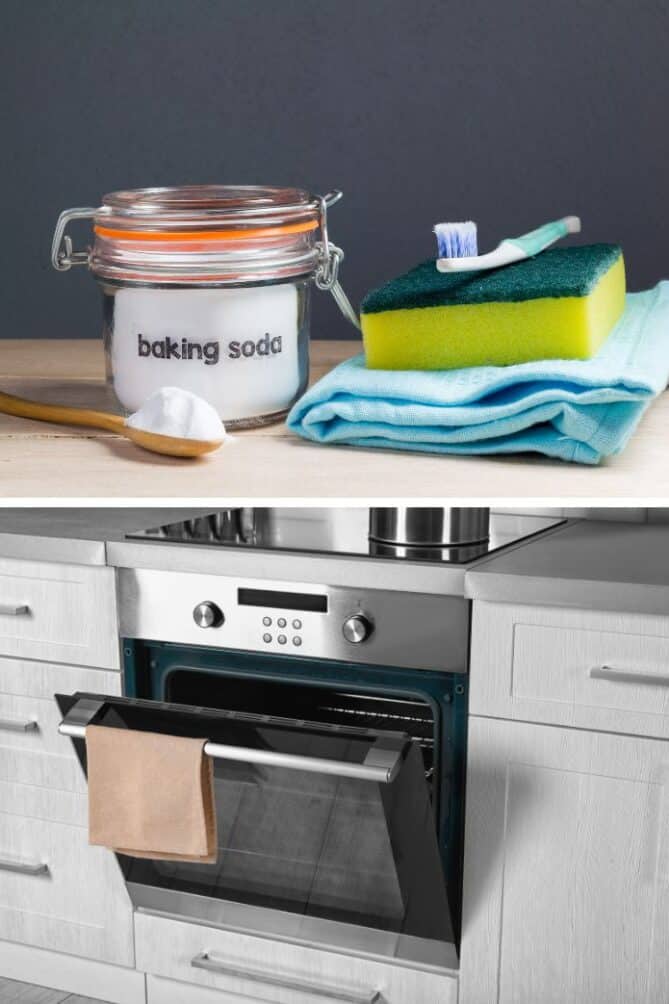

 This post may contain affiliate links which won’t change your price but will share some commission.
This post may contain affiliate links which won’t change your price but will share some commission.